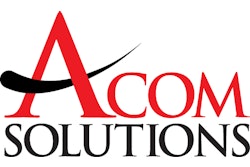IT-driven investment is a thing of the past, and companies must invest information technology budgets in their businesses, Gartner counsels
Egham, UK — October 18, 2004 — With many companies experiencing significant improvement in their markets throughout 2004, information technology (IT) leadership teams at these enterprises must switch from a cost-containment orientation to revenue enhancement and growth, according to technology consultancy Gartner.
The next three years will differ dramatically from the previous four for most IT management teams, Gartner said in a preview into this year's Gartner Symposium/ITxpo in Cannes, France. The outlook for IT organizations and service providers is for accelerating change in most aspects of their roles and structures and for a major increase in complexity.
According to Gartner, in the coming years business partnerships and integration of services will become critical centers of IT value, while multi-sourcing will be the standard delivery model. This will drive new styles of IT organizations, new roles for IT services businesses and new challenges for chief information officers (CIOs).
Gartner sees five key trends driving change for IT organizations and service providers:
"The top issues for IT management transformation through 2008 will be to enable business agility and growth, control IT costs, deliver quality service and demonstrate value for the business — all at once," said Mahoney. "The list goes on to include moving from owning IT to contracting for business service; blending technology, process and business skills organization-wide; and maintaining integrity of corporate systems despite the invasion of consumer devices into the business environment."
Mahoney added that the massive shift in role and responsibility that Gartner foresees will fundamentally change the IT organization as it is known today. "We predict that by 2008, 50 percent of IT organizations will refocus on brokering services and shaping business demand, rather than on delivering IT services directly," Mahoney said. "Furthermore, by 2009 design and management of business processes and relationships will supersede management of technology as the leading value contribution for more than 50 percent of former IT organizations in $1 billion-plus enterprises, and for more than 30 percent of existing IT services businesses."
Effective fusion of business, technology and business relationships will be critical, as Gartner predicts that businesses that understand how to generate real business advantage from fusing these elements will outperform those that do not by at least 15 percent per year.
Organizational and Business Models for the Future
Organizational and business models will need to change significantly to accommodate and profit from this shift, according to Gartner, which forecasts that at least one-third of current CIO roles will transform or disappear by 2009. One of the most fundamental modifications Gartner foresees is the division of IT leadership and organization roles. A new business transformation role is emerging that will cause the strategic IT leadership role to split into business technology and business network leaders.
"The IT leadership role has been in transition ever since it was created, and that evolution is accelerating," said Mahoney. "One of the primary changes is the need for CIOs to play an increasing role external to the organization. By 2008, CIOs will need to spend more than 50 percent of their time on relationships outside the enterprise to ensure they deliver the expected business outcomes."
All this points to an end to the IT organization and IT investments as we know them and a move towards more strategic business thinking. According to Mahoney, "There are no more IT investments — only business investments — and playing a leading role requires that IT leaders have greater direct business accountability to participate in growth initiatives."
This does not just mean changes to the CIO's role. It means fundamental shifts in the very make up of the IT organization, its position in the wider enterprise and the future provision of IT services. Gartner predicts that by 2008, at least 60 percent of IT organizations will reduce their in-house workforce by at least 50 percent compared to 2000.
Mahoney said that successful long-term partnerships with effective service providers hold the key to future business agility. "The reality is that as IT technical operations move out of the enterprise, the power shifts from users and vendors to service providers," he explained. "In this IT service provider-centric landscape, defining the right IT service delivery model lies at the heart of delivering expected business outcomes. We recommend that IT organizations consider culture, industry and ingrained views regarding service-level expectations and the business value of IT in making this key decision."
As such, Gartner advised IT organizations to use measures based on business outcomes rather than IT service levels, predicting that by 2008, at least half of outsourcing deals will come to rely on this model.
Leadership Road Map and Priorities
All-in-all, Mahoney predicts turbulent and challenging times ahead for IT organizations and IT service providers alike. However, he advised CIOs to build IT organization capabilities in several key disciplines of IT Management. The capability requirements for each discipline will vary from organization to organization, however, it will engender an environment where technology, business process design and business relationships can be successfully fused to deliver real business advantage.
In conclusion, Gartner points to four key recommendations for IT leaders to follow:
Egham, UK — October 18, 2004 — With many companies experiencing significant improvement in their markets throughout 2004, information technology (IT) leadership teams at these enterprises must switch from a cost-containment orientation to revenue enhancement and growth, according to technology consultancy Gartner.
The next three years will differ dramatically from the previous four for most IT management teams, Gartner said in a preview into this year's Gartner Symposium/ITxpo in Cannes, France. The outlook for IT organizations and service providers is for accelerating change in most aspects of their roles and structures and for a major increase in complexity.
According to Gartner, in the coming years business partnerships and integration of services will become critical centers of IT value, while multi-sourcing will be the standard delivery model. This will drive new styles of IT organizations, new roles for IT services businesses and new challenges for chief information officers (CIOs).
Gartner sees five key trends driving change for IT organizations and service providers:
- The use of external service providers will continue to grow; strategic sourcing and supply/demand alignment will become critical processes.
- Enterprise partnerships will become a critical focus of IT value.
- The growing business focus of IT value and business transformation requires new leadership styles.
- The scope and importance of IT continue to grow in all industries and geographies, despite threats to its credibility.
- Business pressures for consolidation and federalization increase IT technical and relationship complexity. Application integration and architecture are vital inside and outside the enterprise.
"The top issues for IT management transformation through 2008 will be to enable business agility and growth, control IT costs, deliver quality service and demonstrate value for the business — all at once," said Mahoney. "The list goes on to include moving from owning IT to contracting for business service; blending technology, process and business skills organization-wide; and maintaining integrity of corporate systems despite the invasion of consumer devices into the business environment."
Mahoney added that the massive shift in role and responsibility that Gartner foresees will fundamentally change the IT organization as it is known today. "We predict that by 2008, 50 percent of IT organizations will refocus on brokering services and shaping business demand, rather than on delivering IT services directly," Mahoney said. "Furthermore, by 2009 design and management of business processes and relationships will supersede management of technology as the leading value contribution for more than 50 percent of former IT organizations in $1 billion-plus enterprises, and for more than 30 percent of existing IT services businesses."
Effective fusion of business, technology and business relationships will be critical, as Gartner predicts that businesses that understand how to generate real business advantage from fusing these elements will outperform those that do not by at least 15 percent per year.
Organizational and Business Models for the Future
Organizational and business models will need to change significantly to accommodate and profit from this shift, according to Gartner, which forecasts that at least one-third of current CIO roles will transform or disappear by 2009. One of the most fundamental modifications Gartner foresees is the division of IT leadership and organization roles. A new business transformation role is emerging that will cause the strategic IT leadership role to split into business technology and business network leaders.
"The IT leadership role has been in transition ever since it was created, and that evolution is accelerating," said Mahoney. "One of the primary changes is the need for CIOs to play an increasing role external to the organization. By 2008, CIOs will need to spend more than 50 percent of their time on relationships outside the enterprise to ensure they deliver the expected business outcomes."
All this points to an end to the IT organization and IT investments as we know them and a move towards more strategic business thinking. According to Mahoney, "There are no more IT investments — only business investments — and playing a leading role requires that IT leaders have greater direct business accountability to participate in growth initiatives."
This does not just mean changes to the CIO's role. It means fundamental shifts in the very make up of the IT organization, its position in the wider enterprise and the future provision of IT services. Gartner predicts that by 2008, at least 60 percent of IT organizations will reduce their in-house workforce by at least 50 percent compared to 2000.
Mahoney said that successful long-term partnerships with effective service providers hold the key to future business agility. "The reality is that as IT technical operations move out of the enterprise, the power shifts from users and vendors to service providers," he explained. "In this IT service provider-centric landscape, defining the right IT service delivery model lies at the heart of delivering expected business outcomes. We recommend that IT organizations consider culture, industry and ingrained views regarding service-level expectations and the business value of IT in making this key decision."
As such, Gartner advised IT organizations to use measures based on business outcomes rather than IT service levels, predicting that by 2008, at least half of outsourcing deals will come to rely on this model.
Leadership Road Map and Priorities
All-in-all, Mahoney predicts turbulent and challenging times ahead for IT organizations and IT service providers alike. However, he advised CIOs to build IT organization capabilities in several key disciplines of IT Management. The capability requirements for each discipline will vary from organization to organization, however, it will engender an environment where technology, business process design and business relationships can be successfully fused to deliver real business advantage.
In conclusion, Gartner points to four key recommendations for IT leaders to follow:
- Build capabilities in business process design, delivery and transformation.
- Blend capabilities in business and technology throughout the organization.
- Deliver business outcomes, not technology outputs, and use a service-oriented organization.
- Exploit and business connectedness internally and externally.








